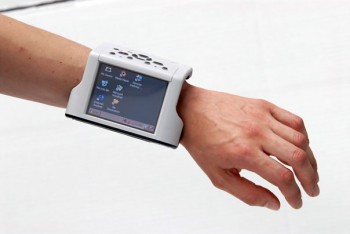On January 29, 2015 Governor Andrew Cuomo signed
New York State Senate Bill S3667D-2013 which will create Article 32 to the Labor Law. This article will establish the licensing of
mold inspection, assessment, and remediation specialists and minimum work standards. According to the bill the law goes into effect in 180 days of January 29, 2015, or if we calculate this right July 28, 2015. This law is so important to the abatement industry the
Professional Abatement Contractors of New York (PACNY) at the last minute added two speakers (Mr. Chris Alonge from
DASNY and Matthew Darin from Bluepoint Environmental) to speak on the law at their 19th annual environmental conference at
Turning Stone Casino being held from February 25-27.
Click here for the registration form.
 |
| Article 32 will require companies doing mold remediation, like above, to be licensed in NYS |
Several important points of the new law are in the bill already, in Section 1: Title 1 is the definitions and the following points:
- Defines the difference between mold remediation (conducting the business of removal, cleaning, sanitizing, or surface disinfection of mold, mold containment, and waste handling of mold) and mold assessment (inspection or assessment of real property that is designed to discover indoor mold growth, toxic mold growth, conditions that facilitate indoor mold growth, and/or indicia of conditions that are likely to facilitate indoor mold growth).
- To be licensed in NYS you must be at least 18 years old; must have completed a NYS Department of Labor (NYSDOL) approved course work including training on the appropriate use and care of personal protection equipment (PPE) as approved by NYS Department of Health (NYSDOH); and paid appropriate fees.
- Exemptions to licensing in the standard include:
- Design professional licensed pursuant to Title 8 of the Education Law (Registered Architects or Professional Engineers) performing mold inspection, assessment, remediation, and or abatement tasks or functions if the person is acting within the scope of his or her practice,
- residential property owner who performs mold inspection, assessment or remediation on his or her own property;
- non-residential property owner, or the employee of such owner, who performs mold assessment or remediation on an apartment building owned by that person that has not more than four dwelling units; and
- an owner or a managing agent or a full-time employee of an owner who performs mold assessment or remediation on commercial property owner by the owner provided, however, that this subdivision shall not apply if the managing agent or employee engages in the business of performing mold assessment or remediation for the public.
- Prohibits a person licensed to perform mold-related services from acting as both the mold assessment contractor and the mold remediation contractor.
- Authorizes NYS to impose civil penalties and revoke a contractor's license after a notice and hearing, suspend or revoke any license, or censure, fine, or impose probationary or other restrictions on any licensee for good cause. (the bill has a list of items).
The next area, Title 2, details the minimum work standards for the conduct of mold assessments and mold remediation by licensed persons. This includes:
- A mold assessment licensee to prepare a mold remediation plan that is specific to each remediation project, the plan must specify:
- the rooms or areas where the work will be performed;
- the estimated quantities of materials to be cleaned or removed;
- the methods to be used for each type of remediation in each type of area;
- the PPE to be supplied by licensed remediates for used by licensed abaters;
- the proposed clearance procedures and criteria for each type of remediation in each type of area;
- when the project is a building that is currently occupied, how to properly notify occupants of such projects.....
- an estimate of cost & an estimated time frame for completion; &
- when possible, the underlying sources of moisture that may be causing the mold and a recommendation as to the type of contractor who would remedy the source of such moisture.
- Requires posting of the remediation project
- Requires that containment cannot be removed any person until the mold remediation licensee overseeing the project has received a notice from a mold assessment licensee that the project has achieved clearance which shall be determined by post-remediation assessment.
- The post-remediation assessment shall determine:
- the work area is free from all visible mold; and
- all work has been completed in compliance with the remediation plan and remediation work plan and meets clearance criteria specified in the plan.
The interesting parts that are left out are the specifics about the training requirements to become licensed as an assessor or remediator/abater. These specifics have been left to NYSDOL to create with some assistance from NYSDOH. Licensing and recertification will be good for two years and you will need to take a refresher course which is also left to NYSDOL to create. It will be interesting to see if individuals certified by the American Council for Accredited Certifications (ACAC), or the American Board of Industrial Hygiene (ABIH) will have to take the courses that NYSDOL creates. The only exemption in the law are for Professional Engineers & Registered Architects. Whoever, creates this process could go to ACAC which has assisted other states with this type of licensing. Only time will tell. Tick Tock! Tick Tock!
































